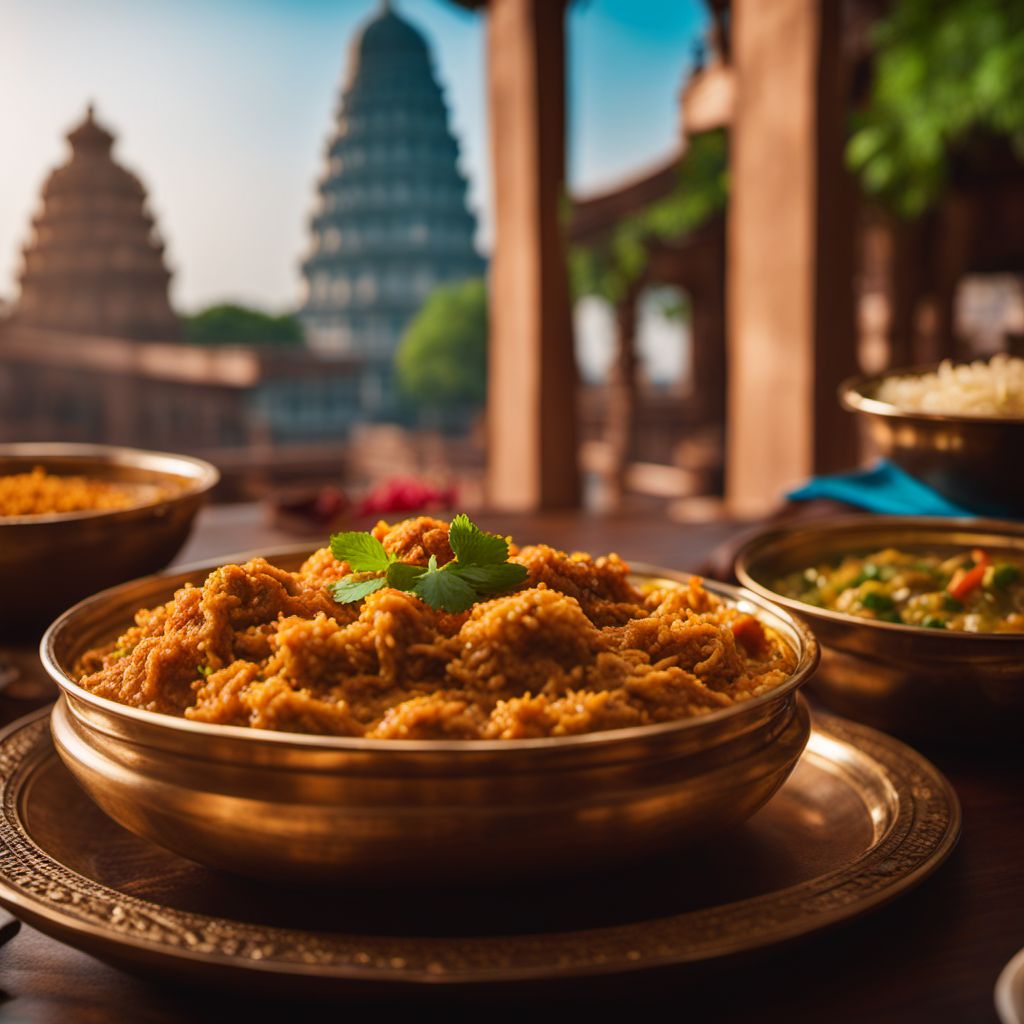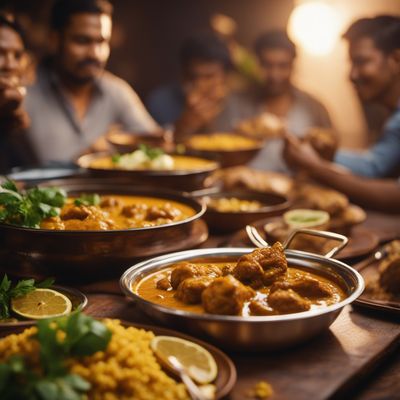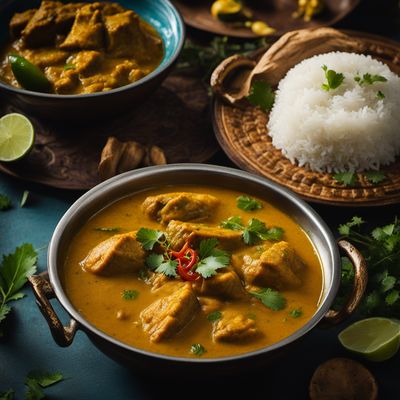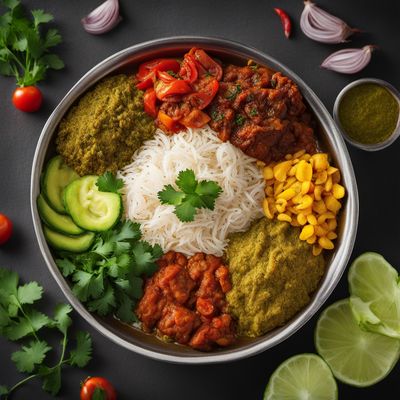
Cuisine
Bengali cuisine
Bengali cuisine is known for its diverse flavors and use of spices. The cuisine is heavily influenced by the region's geography and climate. The cuisine is characterized by the use of fish, rice, and vegetables. Meat, particularly goat and chicken, is also commonly used in dishes. Bengali cuisine is also known for its use of mustard oil and mustard seeds.
Typical ingredients
Rice, Fish, Goat, Chicken, Lentils, Onions, Garlic, Ginger, Tomatoes, Chilies, Cumin, Coriander, Turmeric, Mustard oil, Mustard seeds
Presentation and garnishing
Bengali cuisine is often presented in a communal style, with dishes served in the center of the table for everyone to share. Garnishes such as fresh herbs, chopped nuts, and fried onions are commonly used to add flavor and texture to dishes.
Bengali cuisine has a rich culinary history and has been influenced by various cultures and religions over time.
History
Bengali cuisine has a long history dating back to ancient times. The cuisine has been influenced by various cultures and religions, including Hinduism, Buddhism, Islam, and Christianity. The cuisine has evolved over time and has been influenced by various factors, including trade, migration, and colonization.
Cultural significance
Bengali cuisine is an important part of the culture and identity of the region. It is often associated with hospitality and generosity. Food is an important part of social gatherings and celebrations. Bengali cuisine has also gained popularity around the world and is enjoyed by people of all cultures.
Health benefits and considerations
Bengali cuisine is known for its use of healthy ingredients, including fish, vegetables, and legumes. However, some dishes can be high in fat and calories, so portion control is important. Vegetarian and vegan options are also available for those looking for plant-based meals.
Bengali cuisine dishes

Murgi talkari
Chicken curry
Murgi talkari is a traditional Indian chicken curry that is rich in flavor and spices. It is a popular dish in many parts of India and is often served with rice or naan bread.

Shukto
Shukto is a traditional Bengali dish that is made with a variety of vegetables and spices. The dish is typically served as a side dish and is a great way to showcase the...

Macher jhol
Macher jhol is a traditional Bengali fish curry that is popular in Bangladesh and West Bengal, India. It is a spicy and flavorful dish that is typically served with rice.
Bengali cuisine recipes Browse all »

Bengali-style Spiced Grits
Savory Bengali Grits Delight

Bengali-style Baji with Spiced Potatoes and Chickpea Flour Batter
Crispy Bengali Baji: A Delightful Twist on Spiced Potatoes

Chibwabwa Bhaja (Fried Chibwabwa)
Crispy Chibwabwa Fritters: A Bengali Delight

Tuhau Bhaja (Fried Tuhau)
Tantalizing Tuhau Bhaja: A Bengali Twist to a Malaysian Delicacy

Bengali-style Tagliatelle with Spiced Meat Sauce
Savor the Fusion: Bengali-inspired Tagliatelle with Fragrant Spiced Meat Sauce

Bengali-style Samoborski Kotlet
Spiced and Crispy Bengali Kotlet with a Croatian Twist

Bengali Spiced Fish Curry
Flavors of Bengal: Aromatic Spiced Fish Curry

Hî-ôan Bhaja (Crispy Taiwanese Tofu Fritters)
Crispy Tofu Fritters with a Bengali Twist

Bengali-style Spiced Picada
Savor the Flavors of Bengal with Spiced Picada

Bengali-style Cabbage Strudel
Spiced Cabbage Delight: A Bengali Twist on the Classic Strudel

Murgi Talkari - Bengali Spiced Chicken Curry
Savor the Aromatic Delights of Bengali Spiced Chicken Curry

Bengali-style Fried Delight
Crispy Bengali Bhaja: A Flavorful Twist on Fried Delicacy